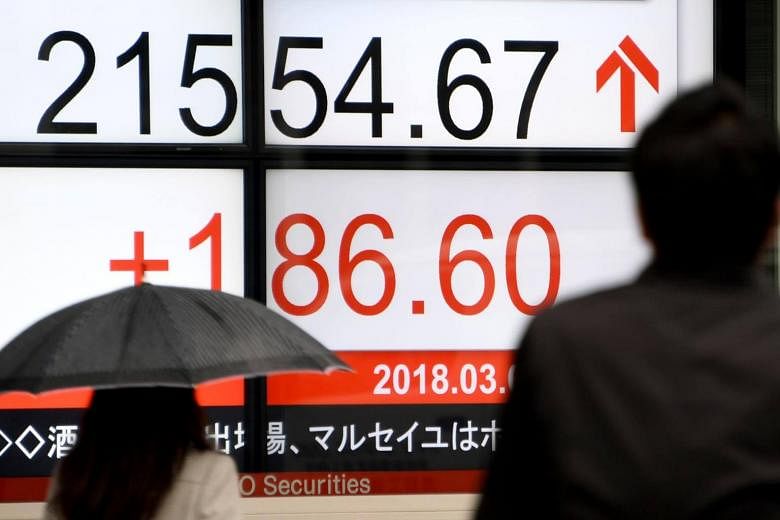SYDNEY (REUTERS) - Asian share markets got off to a hesitant start on Monday (March 19) for a week in which the Federal Reserve is likely to deliver a hike in US interest rates and perhaps signal that as many as three more lie in store for the rest of the year.
Japan's Nikkei took an early 0.3 per cent drop as exporters were hit by recent broad-based gains in the yen.
MSCI's broadest index of Asia-Pacific shares outside Japan eased 0.1 per cent, while Australia's main index edged up 0.1 per cent.
While Wall Street bounced on Friday, the major indices still ended lower for the week. The Dow lost 1.57 per cent, the S&P 1.04 percent and the Nasdaq 1.27 per cent.
The decline was surprising given figures from Bank of America Merrill Lynch showed a record US$43.3 billion inflow into equities last week, outpacing bond flows for the first time since 2013.
For the year so far US$9.8 billion has gone into tech stocks and US$7.3 billion into financials, while US$41 billion has flowed into emerging markets and US$31 billion into Japan.
Whether the cash continues to flow could depend on what the Fed decides on Wednesday. All 104 analysts polled by Reuters expected the Fed would raise rates to between 1.5 per cent and 1.75 per cent on Wednesday.
They were less certain on whether the "dot plot" forecasts of committee members will stay at three hikes this year or shift higher.
It will also be the first press conference for new Fed chairman Jerome Powell.
"Expected is a confident Fed chair, both with respect to the economy's strength and the Fed's approach to policy," said analysts at Westpac in a note.
"While growth forecasts and the distribution of rate projections are likely to drift up, the median fed funds forecast should remain unchanged at three in 2018 and three more in 2019," they added. "Gradual and timely are the operative words for policy."
Any nod to four hikes would normally be considered as bullish for the US dollar, yet the currency has shown scant correlation to interest rates in recent months, falling even as policy tightened.
Reasons cited by dealers include concerns about the US budget and current account deficits, political chaos at the White House, better growth in competing countries, particularly Europe, and the risk of a US-led trade war.
Trade will be top of the agenda at a two-day G20 meeting starting later Monday in Buenos Aires and any signs of escalating stress between the US and China could make investors in Asia nervous.
The cautious mood was evident in demand for the safe-haven Japanese yen which climbed against a raft of currencies last week. Early Monday, the dollar was flat at 106.05 yen and still not far from the recent trough of 105.24.
The dollar was a fraction firmer against a basket of currencies at 90.272, while the euro eased 0.1 percent to US$1.2276.
The prospect of higher US interest rates was been a burden for non-yielding gold, which slipped 0.8 per cent last week. Early Monday, the metal was down at US$1,311.70 per ounce.
Oil prices eased after ending last week with a solid bounce. Brent futures were off 22 cents at US$65.99 a barrel, while US crude futures for April, which expire on Tuesday, dipped 22 cents to US$62.12 a barrel.

